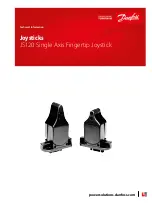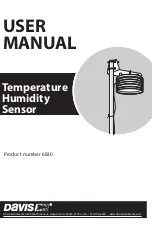
DL205 User Manual, 4th Edition, Rev. B
5–148
Chapter 5: Standard RLL Instructions - Table
1
2
3
4
5
6
7
8
9
10
11
12
13
14
A
B
C
D
Set Bit (SETBIT)
The Set Bit instruction sets a single bit to one within a range
of V-memory locations.
Reset Bit (RSTBIT)
The Reset Bit instruction resets a single bit to zero within a
range of V-memory locations.
The following description applies to both the Set Bit and Reset Bit table instructions.
Step 1: Load the length of the table (number of V-memory locations) into the first level of the
accumulator stack. This parameter must be a HEX value, 0 to FF.
Step 2: Load the starting V-memory location for the table into the accumulator. This parameter must
be a HEX value. You can use the LDA instruction to convert an octal address to hex.
Step 3: Insert the Set Bit or Reset Bit instruction. This specifies the reference for the bit number of
the bit you want to set or reset. The bit number is in octal, and the first bit in the table is
number “0”.
Helpful hint: — Remember that each V-memory location contains 16 bits. So, the bits of the
first word of the table are numbered from 0 to 17 octal. For example, if the table length is 6
words, then 6 words = (6 x 16) bits, = 96 bits (decimal), or 140 octal. The permissible range
of bit reference numbers would be 0 to 137 octal. Flag 53 will be set if the bit specified is
outside the range of the table.
NOTE:
Status flags are only valid until the end of the scan or another instruction that uses the same flag is
executed.
Operand Data Type
DL260 Range
aaa
V-memory V
All (See page 3 - 56)
V aaa
SETBIT
V aaa
RSTBIT
ý
ý
ý
þ
230
240
2
5
0
-1
2
6
0
ý
ý
ý
þ
230
240
2
5
0
-1
2
6
0
Discrete Bit Flags
Description
SP53
On when the bit number which is referred in the Set Bit or Reset Bit exceeds the range of
the table.
DS
Used
HPP Used
















































